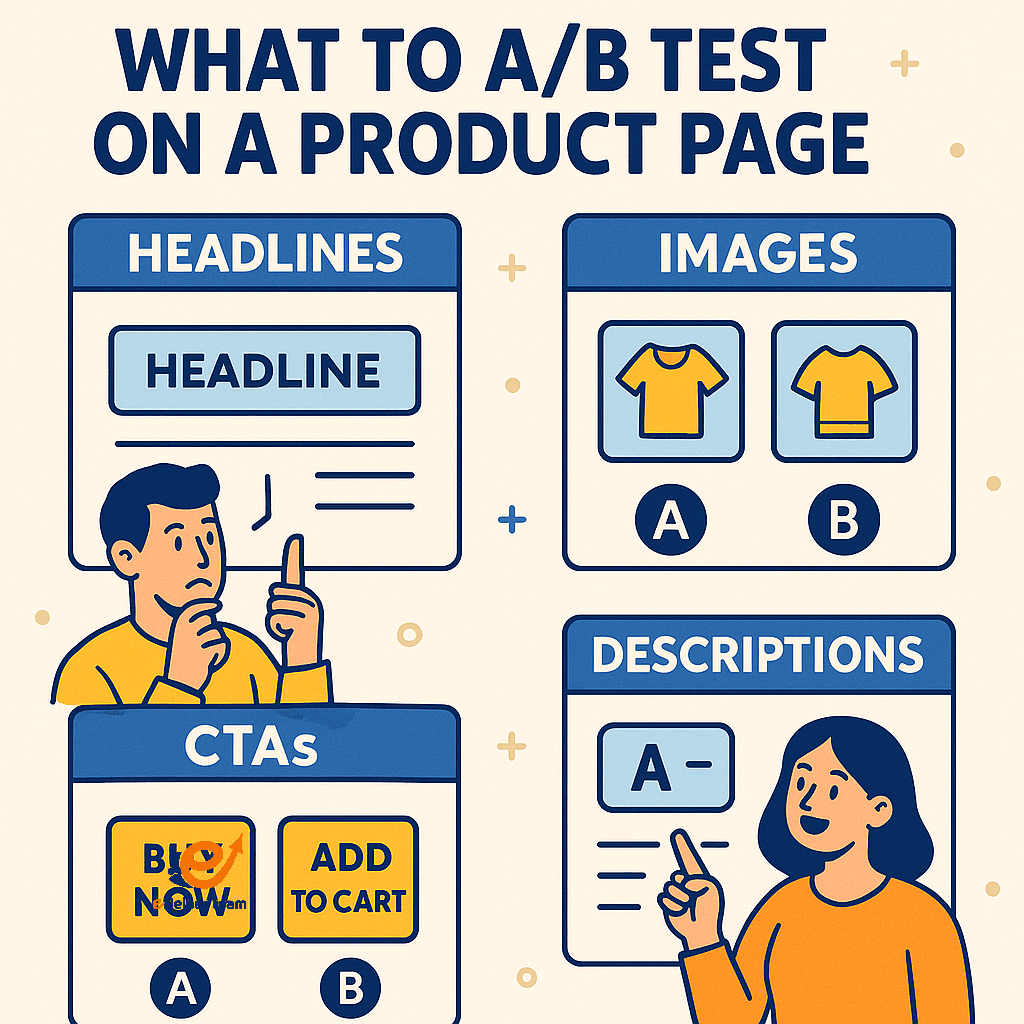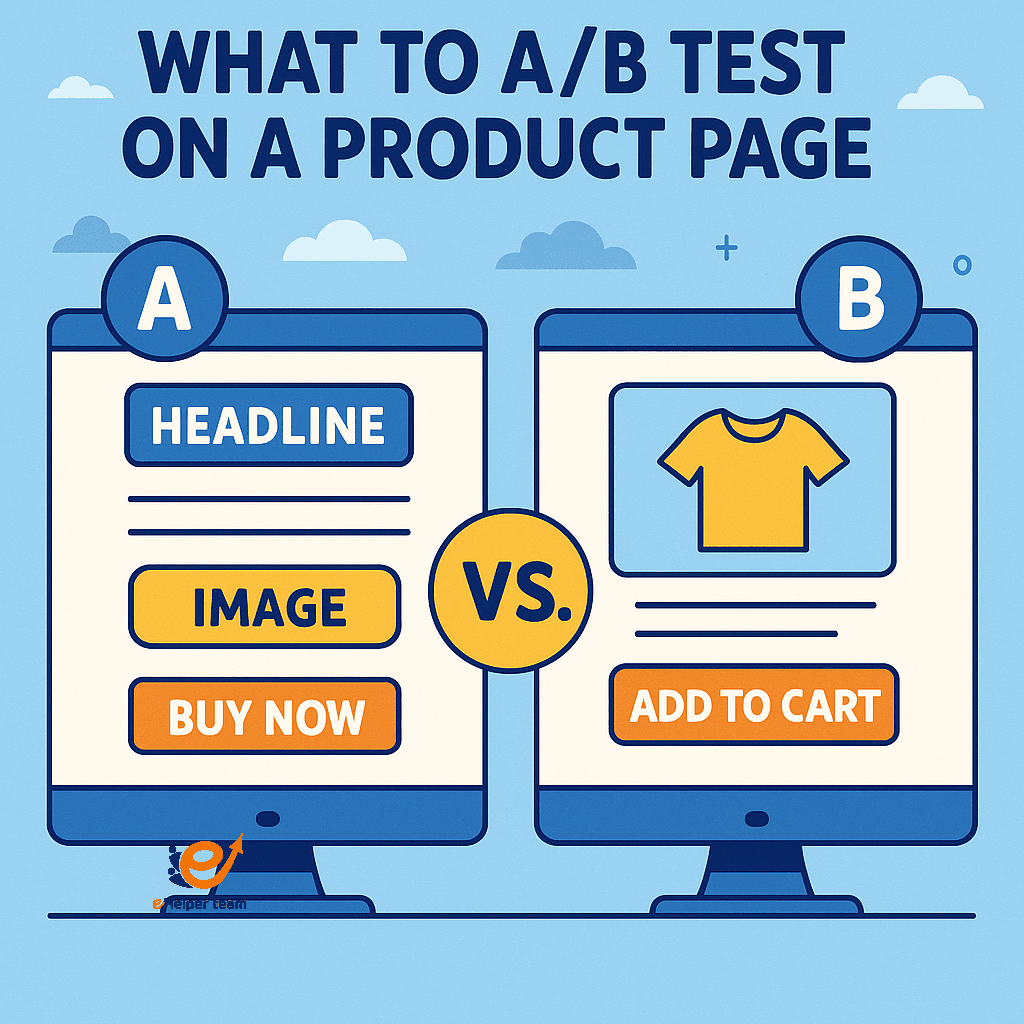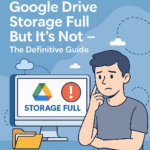A/B Testing for Ecommerce Beginners – Complete Guide
A/B testing for ecommerce beginners often raises a big question: how can something as simple as testing two versions of a page lead to higher sales and better customer engagement? In a marketplace filled with choices, what makes one store stand out from another? The answer often lies in small yet powerful experiments.
Think about it—when customers land on a product page, do they prefer a bold headline or a subtle one? Do they respond more to lifestyle images or plain studio shots? Does the color and wording of a call-to-action button really change their decision to buy? These are the types of questions A/B testing helps answer with clarity.
For store owners who want to uncover these insights, the process doesn’t have to be overwhelming. By learning the basics of what to a/b test on a product page, anyone can begin making data-driven decisions that improve user experience and drive revenue. For a step-by-step breakdown of conversion optimization opportunities, the Ecommerce CRO Checklist: 25 Smart Tweaks to Boost Sales offers excellent guidance on where to start.

Getting Started with a/b testing for ecommerce beginners
Why It Matters Now
In the world of e-commerce, customer preferences change quickly. A/B testing provides a scientific method to keep up with these shifts, ensuring that decisions are based on evidence rather than guesswork. For beginners, this means reducing the risks of making costly changes that might not resonate with buyers.
Setting Realistic Goals
Every test should begin with a clear objective. Are you trying to increase click-through rates, reduce bounce rates, or improve sales conversions? Defining this upfront makes it easier to evaluate success later.
What to A/B Test on a Product Page
Headlines That Convert
Your product title is the first thing shoppers see. Instead of plain descriptions, headlines should highlight benefits. For example:
“Cotton Bedsheets” vs. “Ultra-Soft Cotton Bedsheets for Better Sleep”
Crafting persuasive text is essential. The How to Write Product Descriptions That Actually Sell article dives deeper into creating compelling product messaging.
Product Images and Visual Appeal
Shoppers rely heavily on visuals. Testing different image types—lifestyle vs. studio shots—can reveal which drives more conversions. Adding features like zoom or 360-degree views can also increase trust.
Optimizing CTAs (Call to Action)
Small changes in CTAs often have big impacts. “Buy Now” may perform differently from “Add to Cart.” Similarly, button color, size, and placement can significantly influence customer behavior.
Tools for A/B Testing
Free vs. Paid Platforms
Free tools like Google Optimize are great for beginners.
Paid tools such as Optimizely, Convert, and VWO offer advanced analytics and multivariate testing.
Tips for Beginners
Start small with user-friendly tools, especially if you’re new to digital testing. The article A/B Testing Facebook Ads for Beginners – Proven Strategy with Low Budget is a great example of how low-cost experiments can yield high-value insights.
Step-by-Step Process of A/B Testing
Define Your Goal – Increase conversions, boost engagement, or reduce cart abandonment.
Form a Hypothesis – Example: “Changing the CTA button color from red to green will increase clicks.”
Split Your Audience – Randomly divide visitors into two groups: Version A and Version B.
Run the Test – Allow it to run long enough to gather reliable data.
Measure Results – Track conversion rate, bounce rate, and average order value.
Interpreting Results & Making Data-Driven Decisions
Understanding results requires patience. Ending tests too soon can lead to misleading conclusions. Always aim for statistical significance—a standard measure ensuring results are reliable rather than coincidental (learn more here).
Making data-driven decisions means implementing the winning variation and using insights for future experiments. Over time, this approach compounds into higher conversions and more predictable sales growth.
Comparison Table: A/B Testing Tools at a Glance
| Tool | Cost | Best For | Key Features |
|---|---|---|---|
| Google Optimize | Free | Beginners | Easy setup, Google Analytics integration |
| Shopify Apps | Paid | Shopify merchants | Pre-built product page experiments |
| VWO / Optimizely | Paid | Advanced businesses | Multivariate testing, heatmaps |
Real-Life Case Study
A small UK-based clothing retailer tested two CTA variations: “Buy Now” vs. “Shop the Look.” The latter, paired with lifestyle images, resulted in a 22% increase in conversions within a month. This shows how even minor adjustments can deliver meaningful outcomes for beginners.
For more structured learning, the Ecommerce CRO Checklist offers additional proven ideas that align perfectly with beginner-level A/B testing.
Common Mistakes in A/B Testing for E-commerce
Even though a/b testing for ecommerce beginners is a simple process, many store owners make mistakes that compromise results:
Stopping tests too early: Ending a test after just a few days often produces unreliable data.
Testing too many elements at once: This creates confusion about what actually caused the improvement.
Ignoring external factors: Running a test during holiday seasons, when traffic patterns are unusual, can skew results.
Not tracking meaningful metrics: Measuring only clicks instead of conversions or revenue can lead to misleading conclusions.
By avoiding these pitfalls, you ensure that your efforts are both accurate and actionable.
Advanced A/B Testing Strategies
Once beginners get comfortable, they can explore more advanced approaches:
Multivariate Testing
Instead of testing one element at a time, multivariate testing allows you to test multiple variations simultaneously. This is best for larger stores with higher traffic.
Personalization and Segmentation
Target specific customer groups—such as new visitors vs. returning buyers—to see which variations resonate most.
Testing Beyond the Product Page
A/B testing is not limited to product pages. Try applying it to:
Checkout process
Email campaigns
Landing pages
Pop-up offers
This broader approach uncovers opportunities across the entire customer journey.
The Role of Customer Psychology in A/B Testing
Understanding human behavior helps in designing better tests:
Scarcity: Adding “Only 3 left in stock” can boost urgency.
Social proof: Highlighting reviews or customer photos increases trust.
Anchoring: Displaying a higher original price makes discounts more appealing.
These psychological triggers, when tested properly, can significantly impact conversions.
Key Metrics to Track in A/B Testing
Not all metrics are equally valuable. Beginners should focus on:
Conversion Rate (CR): The percentage of visitors who make a purchase.
Click-Through Rate (CTR): Especially important for CTAs.
Bounce Rate: Indicates whether your page is engaging enough.
Average Order Value (AOV): Shows how much customers spend per purchase.
Revenue Per Visitor (RPV): Provides a more complete picture than CR alone.
Scaling A/B Testing Efforts
When your first tests succeed, you should:
Document results and learnings.
Apply winning variations to similar product categories.
Build a testing roadmap for the next 6–12 months.
Combine A/B testing with other strategies like SEO and content marketing for compounding results.
Proven Best Practices for Beginners
Test high-impact elements first: headlines, images, CTAs.
Let tests run for at least 2 weeks or until 95% significance.
Always back up results with numbers, not assumptions.
Keep a test journal to record what worked and why.
Don’t be afraid of failed tests—they provide valuable insights too.

Frequently Asked Questions
Q1: What is the minimum traffic needed for A/B testing?
A test should have at least 1,000 visitors per version to ensure accurate results.
Q2: How long should I run the test?
Most tests should run for at least 2 to 4 weeks, depending on traffic.
Q3: Can I test multiple elements at once?
Beginners should test one element at a time to avoid confusion.
Q4: Which tool is best to start with?
Google Optimize is ideal for beginners because it’s free and easy to use.
Q5: How do I know my results are reliable?
Look for statistical significance at the 95% confidence level before acting on results.
Conclusion
Through a/b testing for ecommerce beginners, store owners can transform guesswork into a science of growth. Testing headlines, product images, and CTAs empowers businesses to make informed choices that increase conversions. The key is to start small, learn continuously, and build a habit of testing every important change.
If you’re ready to take the next step in growing your online store, explore your options today and let your data guide the way.





